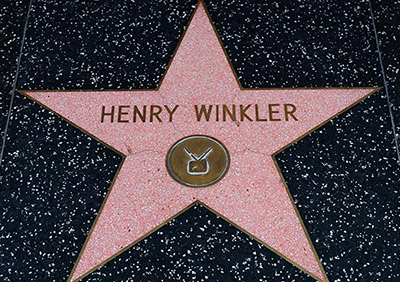Happy Days' Fonzie solving Australia's housing crisis
A television sitcom star of the 1980s who epitomised the notion of cool at the time, is now seen as an early adopter of the types of granny flat, and Fonzie flat, accommodation needed to address a chronic shortage of housing.
When American scriptwriters more than three decades ago moved a minor sitcom character into the garage attic of the main protagonist’s family, little could they have known they’d be pre-empting a solution to Australia’s housing crisis.
The Fonz, or Fonzie, was the leather jacket-wearing definition of cool and became a, if not the, star of the long-running Happy Days television comedy series.
Fast forward (a feature not available to 1980s viewers) to today and the Fonzie Flat he rented from the wholesome Cunningham family is the independent accommodation model being touted as a solution to a housing crisis enveloping Australia.
As a housing perfect storm strengthens, more Australians than ever before are losing hope of owning their own home or are contemplating losing the one they have.
The tenth interest rate rise in a row pushed the cash rate to 3.6 per cent and an actual interest rate of 5.5 per cent to 6 per cent for property owners.
There are 45,000 people migrating to Australia each month and just 31,000 vacant properties in Australia. Rents are increasing twice as quickly as incomes.
Not enough houses are being built each year or have been for the past decade. Another 1.5 million Australians aged 17 to 21 are about to move out of home.
The maths clearly doesn’t add up and we desperately need a solution. That solution is undoubtedly higher housing density.
Much like Henry Winkler’s character did all those years ago, it’s time for Australians to change their conventional way of thinking and look towards innovative solutions.

Separate granny flat homes and Fonzie flats incorporated into, but separate from, the main residence can help solve the housing shortage and assist struggling renters while at the same time maximising investments.
The returns for property investors are too good to be ignored and it’s the perfect time to consider introducing them to your property portfolio, whether as part of your investment properties or at your own residential property.
Most Australians barely use 50 per cent of their block of land. The average household is shrinking, with the 2021 Census revealing that it now comprises 2.5 people.
What’s more, the fastest growing type of housing is one- and two-bedroom rentals, and dual occupancy (more than one dwelling on one block of land) is the perfect way to take advantage of this high demand.
Last August we saw The Greens advocate for a national rent freeze, drawing comparison to rent control programs in New York and Toronto. It’s questionable whether this is a sustainable option and one Australia should implement.
Despite rent control programs in New York and Toronto, New York is still experiencing the highest level of homelessness since the Great Depression Era in the 1930s. In December 2022, there were over 102,000 homeless people, including almost 30,000 children.
The solution isn’t rent control programs, it’s increasing our supply and removing all the rules and regulations that get in the way of housing supply and innovation. We’ve already seen the introduction of dual occupancy around the world as effective solutions to different countries’ housing shortages.
In San Francisco, a city with one of the worst housing shortages and highest rental prices, with an average monthly rent of $3,631, whole streets have garages converted into self-contained flats.
In Toronto, another city with a severe lack of affordable housing, many homeowners are buying three-storey houses on 100m2 blocks and converting the bottom floor into self-contained flats.
With Australia’s population rapidly increasing, it won’t be long before we need to adapt and follow in these footsteps.
Building a granny flay costs approximately $150,00, and if you were to take a loan for the entire amount at a 6 per cent interest rate, the additional cost would be $9,000 per year – only $173 a week. Meanwhile, depending on the size and location of the granny flat, you can charge a rent upwards of $400 per week.
It’s a win-win situation, more affordable rents, and it helps us pay off our mortgages sooner and maintain a positive cash flow. For empty nesters and retirees, it could provide an annual income higher than the pension.
Navigating building regulations around Fonzie flats
It can be difficult to navigate the world of adding a granny or Fonzie flat to a property, especially as the government is only just starting to take notice of their incredible benefits in solving the housing crisis.
Every state and, in some instances, every council area has different regulations surrounding secondary dwellings, but it is well worth investing time into conducting research, beginning construction, and renting out a secondary dwelling on your properties.
If the council has tight regulations surrounding secondary dwellings or does not permit it, do not fear, governments are slowly coming around, as we’ve seen with New South Wales’ broader secondary dwelling policy.
Governments around Australia could fix the housing shortage with the stroke of a pen by allowing every Australian to build a granny or Fonzie flat on their property ‘as of right’; meaning without the need to go through time-consuming, expensive and uncertain approval processes.
Secondary dwellings benefit everyone – the government, Australian renters, and us as property investors, and may well be the future of Australia. Just get on with it and don’t, to paraphrase the Fonz, “Sit on it”.





















